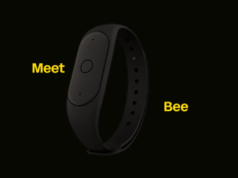Samsung recently announced its new octa-core, Exynos 8895 SoC, and intends to use it in standalone VR headsets that the company revealed behind closed doors at MWC 2017, but the company still intends to make the most of its Exynos 8890 processor. The new doesn’t cancel out the old, at least not yet.
A report out of Korea says that Samsung has partnered with VR eye tracking tech company Visualcamp to showcase Visualcamp’s technology at MWC 2017. Samsung provided its Exynos 8890 SoC for Samsung’s own upcoming all-in-one, Head Mounted Display (or HMD) at the Korean giant’s own B2B booth. The Exynos 8890 in Samsung’s HMD proved a formidable combination with Visualcamp’s VR eye tracking, as the Exynos 8890 CPU share measured in at less than three percent on average. Visualcamp’s VR eye tracking tech can be ported to just about any mobile platform, including Windows, Linux, Android, and even Mac OS. Visualcamp has appeared in the G-Startup Seoul Top 15 and Red Herring Asia 100 alongside of tech giants Google, Facebook, and Alibaba.
We’re not shocked to see the Exynos 8890 SoC be utilized for VR; after all, Samsung has even implemented its octa-core Exynos 7420 SoC in VR headsets such as the IDEALENS K2 and DeePoon M2, and the Exynos 8890, having 30% better performance and 10% better power efficiency than the 7420, powers the VR experience between the Galaxy S7, Galaxy S7 edge, and Gear VR in select markets. The 8890 was specifically designed with Mali’s T880-MP12 GPU to handle heavy graphics performance, of which VR fits the demand like a ball in a glove.
The new Exynos 8895 is built on Samsung’s 10nm, FinFET manufacturing process and supports 4K screen resolution and video recording and playback (at 120fps) as well as artificial intelligence (AI). The Korean giant intends to push forward with smartphone-tethered VR headsets, having introduced its Gear VR with Controller at MWC that, with compatibility for current smartphones, will work seamlessly with the Galaxy S8 and Galaxy S8+.
Source






